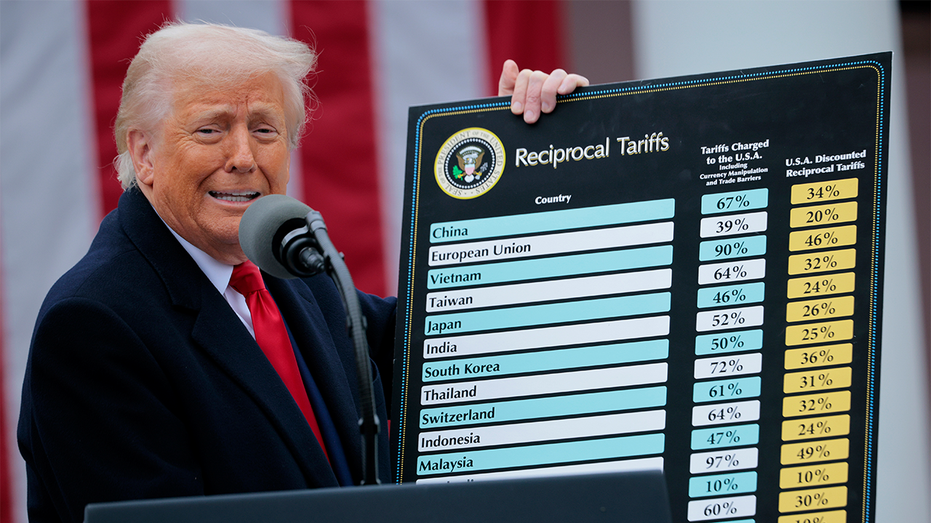U.S. Treasury Secretary Scott Bessent on the win-win minerals deal with Ukraine, pushing for a trade deal with China and tariff clarity, President Donald Trumps tax cuts and other top legislative topics.
The U.S. trade deficit grew to a record high in March after businesses stepped up their imports of goods in an effort to front-run tariffs.
The Commerce Department on Tuesday reported that the trade deficit increased 14% to a record $140.5 billion in March, rising from $123.2 billion in February.
Economists polled by LSEG had projected the trade deficit would be $137 billion in March.
Imports increased 4.4% to reach an all-time high of $419 billion in March, with goods imports rising 5.4% to a record $346.8 billion. Exports rose 0.2% to $278.5 billion, also a record high, while exports of goods were up 0.7% to $183.2 billion.
TREASURY’S BESSENT ON TRADE TALKS: US GETTING ‘GOOD OFFERS,’ MOST DEALS TO BE CONCLUDED BY END OF YEAR
The Port of Charleston in Charleston, South Carolina, U.S., on Wednesday, Nov. 3, 2021. The supply crunch that has dogged the global shipping industry could worsen before it gets better, with new challenges ranging from crew retention to wage inflati (Photographer: Sam Wolfe/Bloomberg via Getty Images / Getty Images)
President Donald Trump’s tariffs, including the 145% levies imposed on goods imported from China as well as his “reciprocal” tariff plan that aims to address bilateral trade deficits, spurred a surge in imports as companies looked to bring in shipments ahead of tariffs taking effect.
While the reciprocal tariffs on most U.S. trading partners were suspended for 90 days, duties on Chinese goods took effect in early April and kicked off a trade war with retaliation by Beijing.
WILL TARIFFS REDUCE TRADE DEFICITS? EXPERTS WEIGH IN

President Donald Trump’s “reciprocal” tariffs were based on bilateral trade deficits. (Chip Somodevilla/Getty Images / Getty Images)
Last week, the Commerce Department reported that the trade deficit cut a record 4.83 percentage points off of gross domestic product (GDP) in the first quarter, which resulted in the U.S. economy contracting at a 0.3% annualized rate – the first decline since the first quarter of 2022.
The formula used to compute GDP, which measures domestic economic output, subtracts imports because spending on imports isn’t part of domestic production, whereas exports produced in the U.S. and shipped overseas are a positive in the equation.
BUFFETT CRITICIZES TRUMP’S TARIFFS ROLLOUT, SAYS US SHOULDN’T USE ‘TRADE AS A WEAPON’

Tariffs have rattled financial markets in the first half of this year. (Photo by Drew Angerer/Getty Images / Getty Images)
Economists expect the flood of imports to ebb by May, which could help with second quarter GDP. However, they caution that the lift from subsiding imports could be offset by a decline in exports as other countries retaliate against American goods and engage in travel boycotts.
In general, economists are also broadly dismissive of trade deficits as an indicator of the health of an economy, though Trump used trade deficits as the basis for his reciprocal tariff policy.
GET FOX BUSINESS ON THE GO BY CLICKING HERE
“Trump’s trade deficit fixation is a mistake,” said Competitive Enterprise Institute senior economist Ryan Young. “The U.S. last ran a trade surplus in 1975. In those 50 years, U.S. income has roughly doubled, and quality of life has improved by nearly every measure, from healthcare quality and life expectancy to the percentage of households with air conditioning, Internet access, and other essentials.”
“Trade deficits do not matter one way or the other for economic health. They neither hurt nor help,” he added.
Reuters contributed to this report.